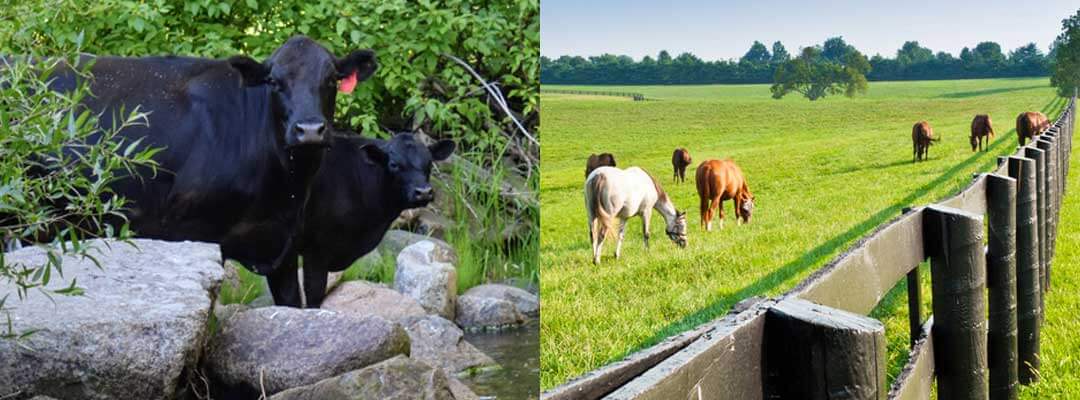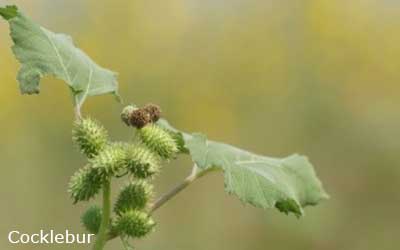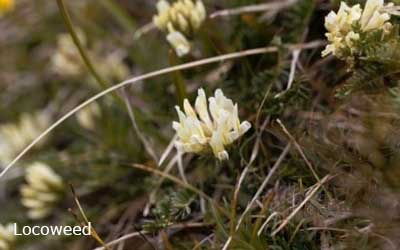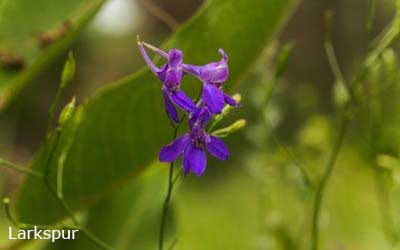A Must-read: Poisonous Plants Affecting Cattle and Horses

A Q&A with Laura Goodman, PhD, Assistant Professor and Range Extension Specialist with Oklahoma State University, details dangerous plants and tips for protecting horses and cattle from sudden sickness and death.
What are common poisonous plants affecting horses and cattle?
Planted forages can be toxic. For example, Klein grass can cause liver damage and weight loss. Dallisgrass, annual ryegrass, and tall fescue can cause ergot poisoning. Plants like article-cockleburs, poke weed, curly dock, broom snakeweed, singletary pea and Jimson weed are also toxic. It is safest to remove these plants from your pasture, but if animals have enough food available, they rarely eat them because they are not palatable.

What are some of the most dangerous plants?
Both water hemlock and poison hemlock are commonly found in the east and grow near water. They will kill horses and cattle within the first day of eating them. Immediate symptoms can include convulsing, muscle tremors, salivation and grinding teeth.
Locoweed is found in Western Oklahoma, Texas, New Mexico, Western Kansas and Colorado. It’s a big problem in the areas that it grows, especially areas where there are a lot of stocker cattle. Locoweed doesn’t have a bad taste or cause a nauseous feeling to the animal, so they have no way of knowing they shouldn’t eat it. There is a whole group of plants that are locoweeds, and they are really palatable like alfalfa. Because they’re so tasty and provide no negative feedback, animals will eat a lot of them. The plant grows really early in the year when there is little vegetation; they’re the first green thing animals see after the winter.
What are common poisonous plants affecting horses and cattle?
With cattle and sheep, they’ll get thin, and their liver and kidneys will be affected. Horses will drop weight, too, but unfortunately with horses, it affects their brains and damages brain cells.

Larkspur contains toxic alkaloids and is a problem in the spring and dangerous for two reasons. First, it’s palatable relative to other vegetation, like the locoweed, and secondly, because it is most toxic after flowering. Larkspur grows in higher elevations and is found around springs. It will kill animals really quickly, within a day of consumption or as few as eight hours. Toxic to both horses and cattle, larkspur can cause respiratory systems to shut down.
What are common signs of poisonous plant toxicity?
Depending on the plant ingested, common symptoms can include muscle tremors, uncoordinated movement, raised body temperature, rapid breathing, rough coat and even gangrenous tissue.
How can high stocking rates increase poison risks?
We know if you have a high stocking rate, and they’re hungry, animals will consume plants that are not palatable (most poisonous plants are not appetizing because of an astringent taste or latexy sap.) Use conservative stocking rates, make sure to feed adequate vitamins, minerals and supplements, and provide protein in the winter.
How can horse and livestock owners remove poisonous plants from acreage?

Some herbicides increase the palatability of plants as they are dying, and some plants remain toxic when dead, so I recommend using herbicide and then brush hogging the plants. If it’s a small population of poisonous plants, you could also remove them by hand.
What are your top tips to protect animals from poisonous plants?
The No. 1 thing is to keep appropriate stocking rates, and make sure you’re grazing with appropriate number of animals for the area of land that you have and the forage production that you grow. Be aware with what’s going on with the weather, especially during a drought because when it starts raining, you can have more issues with toxic plants since they usually start growing more quickly than more palatable forages.
Who can livestock owners go to for more information specific to their area?
It is ideal to look to someone local for more resources and information, such as a county extension agent or educator.
To hear one horse owner’s close call with dangerous black locust toxicity, read the article, “On to Safer Pastures: Protecting Horses from Poisonous Plants.”


